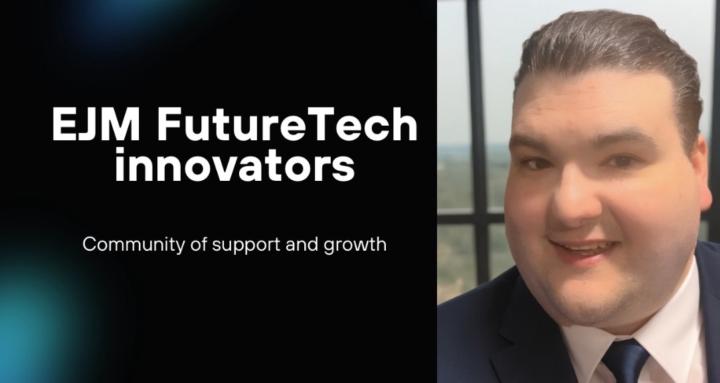16d • 👨🏫👩🏫Industry leaders
Breakthrough Leadership Moments: How One Decision Changed a Leader’s Trajectory — A Case Study
In the ever-evolving landscape of business and organizational management, leadership is often measured not just by consistent performance, but by breakthrough moments—those pivotal decisions that redefine a leader’s trajectory and, consequentially, the future of their organization. This blog post explores such a breakthrough leadership moment through a detailed case study, highlighting the decision-making process, contextual factors, and lasting impact.
Introduction: The Anatomy of a Breakthrough Moment
Every leader encounters crossroads that demand pivotal decisions. These moments test their vision, courage, and strategic acumen. The ability to recognize and seize these opportunities often distinguishes transformational leaders from those who merely manage the status quo.
A breakthrough leadership moment is characterized by:
- High stakes: The decision has significant potential upside or downside.
- Uncertainty: Information is incomplete or ambiguous.
- Visionary impact: The decision sets a new course for the leader and their organization.
Case Study: Satya Nadella’s Transformative Decision at Microsoft
Context
In 2014, Satya Nadella assumed the role of CEO at Microsoft, a technology giant grappling with a rapidly shifting industry landscape. The company was perceived as clinging to legacy products, and was losing ground to competitors like Apple, Google, and Amazon in emerging technology spaces such as cloud computing and mobile.
The Decision
One of Nadella’s earliest and most consequential decisions was to prioritize cloud computing as the central strategic focus for Microsoft. This was embodied in a comprehensive shift towards cloud-first and mobile-first solutions, particularly investing heavily in Microsoft Azure.
At that time, the cloud market was dominated by Amazon Web Services (AWS), and Microsoft’s cloud initiatives were underdeveloped relative to competitors. This move required significant internal restructuring, reallocation of resources, and a cultural transformation emphasizing innovation and agility.
Challenges
- Skepticism within Microsoft about pivoting away from traditional products like Windows and Office.
- Internal resistance from leaders and teams accustomed to legacy business models.
- The need to catch up rapidly in a technically demanding and competitive space.
Breakdown of the Decision-Making Process
1. Assessment of Market Trends: Nadella understood that the future of enterprise IT was in cloud services, noticing the rapid uptake by competitors and the evolving needs of customers.
2. Listening to Stakeholders: He engaged with internal teams, customers, and industry experts to gather insights, balancing optimism with realism.
3. Aligning Vision with Execution: He articulated a compelling vision of a “mobile-first, cloud-first” Microsoft, galvanizing employees to embrace change.
4. Empowering Teams: Rather than dictating every detail, Nadella fostered autonomy among key teams to innovate rapidly in cloud services.
5. Communicating Transparently: He maintained clear, consistent communication about the strategic shift, addressing concerns and emphasizing the opportunity.
Outcomes: Tangible and Intangible Impacts
Financial Growth:
Microsoft’s Azure became one of the fastest-growing cloud platforms globally, significantly contributing to a marked increase in Microsoft’s market valuation—from approximately $300 billion in early 2014 to over $2 trillion in 2021.
Culture Shift:
Nadella’s decision catalyzed a cultural transformation within Microsoft, shifting from a “know-it-all” to a “learn-it-all” mentality, encouraging collaboration, innovation, and continuous learning.
Market Relevance:
The cloud-first strategy restored Microsoft’s reputation as an industry leader, enabling it to compete effectively across new technology domains.
Lessons for Leaders
1. Vision is Crucial but Requires Execution: Identifying strategic trends is necessary but not sufficient; aligning the whole organization behind the vision is critical.
2. Courage to Challenge Legacy: Leaders must be willing to disrupt their own organizations and legacy products to embrace future opportunities.
3. Culture as the Backbone of Change: Sustainable transformation hinges on cultural evolution, not just strategic shifts.
4. Stakeholder Engagement: Broad consultation and transparent communication foster buy-in and reduce resistance.
5. Agility and Empowerment: Providing teams with autonomy accelerates innovation and execution.
Breakthrough leadership moments are rarely about incremental change; they involve decisive action under uncertainty, underpinned by vision and resilience. Satya Nadella’s decision to refocus Microsoft on cloud computing provides a powerful example of how a single leadership decision can reshape an organization’s trajectory dramatically.
For current and aspiring leaders, the takeaway is clear: develop the courage and clarity to make breakthrough decisions, foster an adaptive culture, and lead with a future-first mindset. In doing so, you don’t just react to change—you become the catalyst for it.
What breakthrough leadership moment have you experienced or witnessed? Share your thoughts and join the conversation below. Let's change the mold of leadership for the better of the world!!
2
0 comments

skool.com/ejm-futuretech-23484
Community to grow in technology solutions and discussions in all areas of industries but not just discussions also consulting!!!!
Powered by





